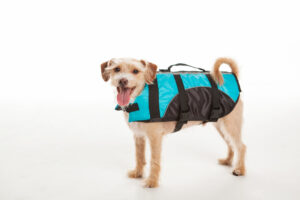Boating Season is Here – Are You Up to Speed on Safety?

With spring in full bloom and summer just on the horizon, prime boating season is upon us here in California! And you might notice more people on the water than ever, because sales of recreational boats have
been growing at a steady clip for seven consecutive years now, according to the National
Marine Manufacturers Association.
Fortunately, the number of boating accidents isn’t growing at the same pace—in fact, they are
decreasing. In 2017, the most recent year for which statistics are available, accidents were
down nearly 4% versus 2016; fatalities dropped by more than 6%, and injuries by over 9%.
That’s great news, but in order to make sure those numbers keep moving in the right direction,
boaters need to keep making safety a priority. We’re here to help: Just in time for National Safe
Boating Week May 18-24, we’ve compiled some tips for anyone who’s about to climb aboard.
Choose the right types (and sizes) of life jackets—and make sure everyone wears them.
There are different types of life jackets for various activities, such as vest-type jackets for calm,
inland waters, offshore jackets with additional buoyancy designed for rougher water, and even
some made for waterskiing, kayaking, etc. Think about what you’ll be doing, where you’ll be
headed, and who will be with you, so you have the ones you need.
Each individual on board (even pets) should have a life jacket that fits properly, and most
important, they should wear it at all times—there probably won’t be time to throw one on
when something bad happens unexpectedly. According to the Coast Guard, in most cases of
boating-related drowning, life jackets were on board but they weren’t worn by victims.
Make sure you have other key safety equipment on board.
There are plenty of other items you should have (or consider having) on your boat to increase
safety. Fire extinguishers are required on most boats, even small vessels, so make sure you
have the right type and that you know how to use it. If you have an enclosed area on your boat,
you should install a carbon-monoxide detector.
Cell phones don’t always work well when you’re out on the water, so a VHF radio can ensure
you’re able to call for help—it might be a good idea to get an emergency position-indicating
radio beacon in case you get lost, too. And finally, you should always carry an anchor and signal
lights, even if you aren’t planning on being out at night.
Use common sense, both before and after you launch the boat.
Keeping your boat’s systems and equipment (including safety gear, of course) in good shape is
the first step to preventing problems, so put in the time to perform inspections and
maintenance tasks as needed. Then, before any trip, no matter how quick, check the weather.
Look for wind and small-craft advisories in particular.
When you hit the water, the fun can begin! But keep in mind that a quiet, enjoyable day can
change in just an instant, too. So don’t speed. Don’t drink or allow excessive distractions.
Remember that there are other people out there too, and that when everybody does their part,
boating is a lot more fun—and a lot safer—for us all.
Review your boat insurance before going out on the water.
It is important to review your boat insurance thoroughly before you get back in the water this season. Is your boat insured to value? Do you have coverage for on-water towing? What about your trailer? If your boat is stored in a marina, be sure your liability limits meet their requirements and that you have fuel spill liability insurance coverage. Contact us today to review your insurance or to obtain a new quote. Call us at (925) 447-2565 or email us at save@genemorganinsurance.com.

